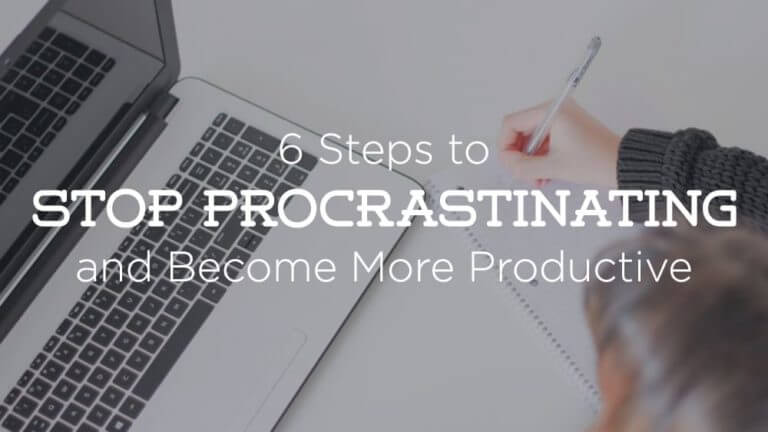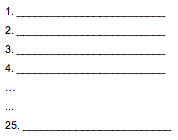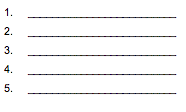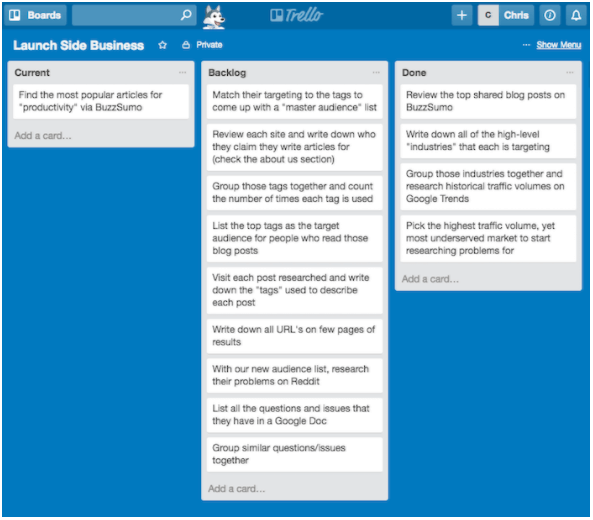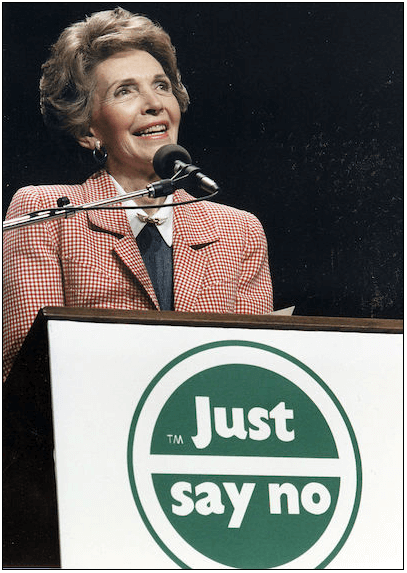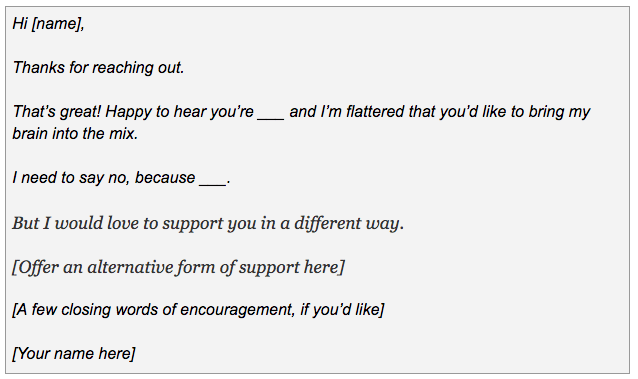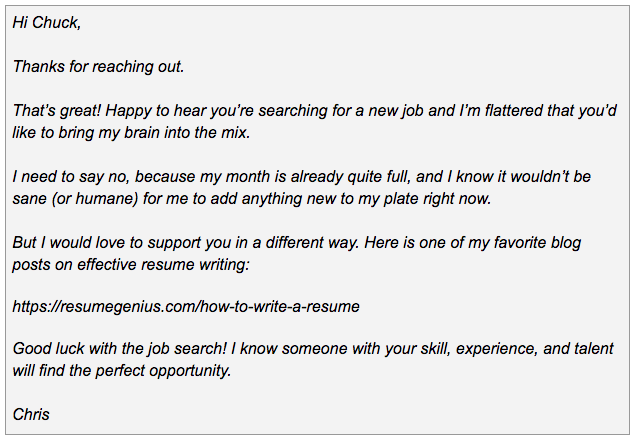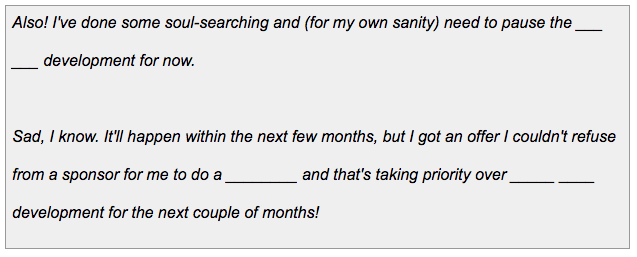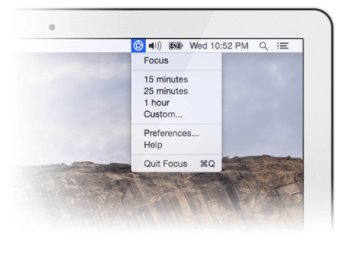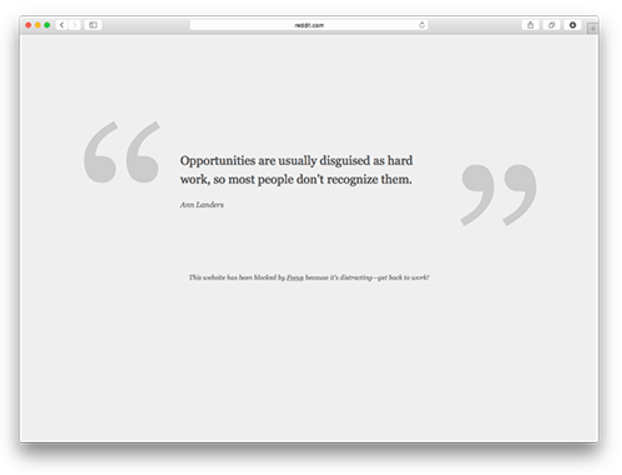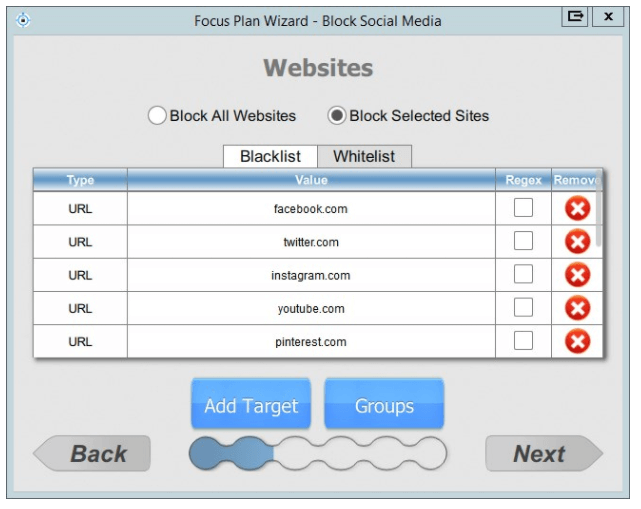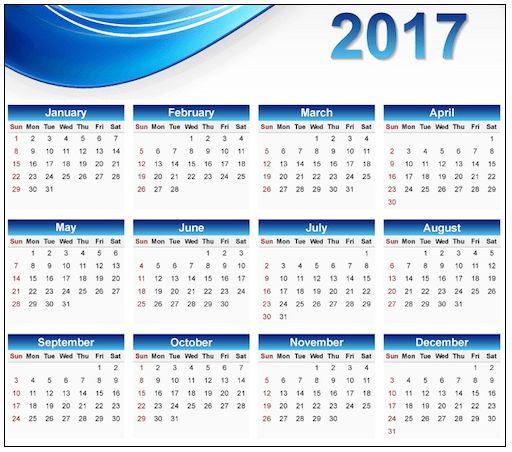No matter how skilled you are as an entrepreneur, procrastination can be your undoing—especially when it comes to making progress with your side hustle. Trust me, I know.
Even if you’re the absolute best developer, designer, writer, marketer or otherwise, your strengths (and experience) will be rendered useless if you allow yourself to “keep pushing off” the aspects of your project that feel like work.
Thus, learning how to stop procrastinating early on in your entrepreneurial career is one of the best investments you can possibly make.
Today, I want to introduce you to my friend and fellow side hustler, Chris Dritsas.
His side hustle, MailOverload is a genius tool that completely reframes how you think about email—allowing in only the email you pre-approve to reach your inbox. Designed for busy professionals, MailOverload turns unapproved emails into a connection request that gives you the option to approve, decline, or block.
It’s seriously awesome. And so is Chris—here he is soaking up some rays 😎
…
Now, here’s Chris’ guest post about his own journey learning how to stop procrastinating and begin delivering real results for his side hustle.
6 Steps I Used To Stop Procrastinating (For Good) and Finally Launch My Side Hustle
All while working a full-time job and raising two toddlers…
Launching is hard!
I love to procrastinate. There, I said it. I hate to admit that, but it is true. I used to feel like it was out of my control. Like I was hardwired to do it no matter how much I tried to avoid it.
The problem is I am the father of two toddlers, I have a full-time job, and I’m bootstrapping a side business. Wasting time is not a luxury I have.
It took me two years of spinning my wheels before I figured out how to stop procrastinating and become more productive.
Now, I’ve finally launched my side business, and it is growing every day, getting my family and I closer and closer to financial freedom.
Here’s how I beat procrastination, finally launched my side hustle, and how you can do it too.
Do You Procrastinate? Well, It’s Not Your Fault.
It turns out it’s not your fault (phew!).
Your brain is programmed to procrastinate according to this study at UCLA. It says that you tend to struggle with tasks that take a long time in the hope of some future reward.
Moreover, according to the Journal of Cognitive Neuroscience your brain hates this so much that it will actively fight you every step of the way. The best tool your brain has to win this battle is called “procrastination.”
Instead, your brain would much rather do things that take little time to accomplish, giving you an immediate reward.
Checking email, seeing who followed you on Twitter, and looking at that new video your “friend” posted on Facebook. It’s fast, easy, and immediately rewarding. Your brain loves this and craves more of it.
Fighting your brain’s hardwired approach is not the winning strategy. However, here’s how you can trick your brain into beating procrastination and still accomplish your big goals in life.
The Top Secret Anti-Procrastination Hack.
The Japanese economy was destroyed after World War 2, yet, they built it back up with such efficiency and strength that they eventually outperformed American automakers in the 1980’s. But how?
By using something the Japanese call Kaizen, or continuous improvement.
Instead of trying to make big radical changes in a short amount of time, they made small improvements every day that gradually lead to the change they wanted.
Kaizen is a brilliant hack for your productivity.
You’ve learned that tackling large tasks, taking a long time to complete, goes against how your brain is wired. Your brain will fight you every step of the way by using the tool of procrastination to stop you in your tracks.
However, you have also learned that the opposite is true. Your brain loves small quick tasks that give you an immediate reward. Your brain will happily feast on this given a chance to do so.
To stop procrastination without much effort, you are going to give your brain exactly what it wants—fast and easy improvements every day. Put those small improvements together over time, and you will accomplish your biggest goals.
But how do you take your big goals, the ones you are procrastinating on, and turn them into small, everyday improvements? Easy, just use the Warren Buffett strategy.
Step 1: Using the Warren Buffett Strategy.
You are going to pull out a piece of paper and write down the top goals you are trying to accomplish.
Write down a max of twenty-five:
Next, you are going to pick the top five most important ones. The ones that have the greatest impact on your life once you accomplish them. Hint, they are usually the most difficult on your list. Don’t shy away from the hardest ones, they’ll become easy for you:
Now that you have your top five goals, you are going to circle just one, the top goal. The goal that when completed will make more impact on your life than any other on your list.
For me, it was launching a side business while keeping my full-time job, and raising a family. Again, this is usually the most difficult one (mine sure was!). That’s the one you probably want to pick.
This is called the Warren Buffett strategy.
Given this is Warren Buffett’s strategy, and he is one of the wealthiest people in the world, you can have confidence that he knows a thing or two about the best way to beat procrastination. Moreover, he’s sharing it with you. Take advantage of this. Do it now.
Step 2: Breaking it All Down.
Break down your one goal into small manageable tasks.
Remember, to trick your brain into avoiding procrastination, you need to take your big goal and break it down into small tasks that you can quickly complete every day. This rewards your brain and tricks it into wanting more.
Do this by using Trello, it’s free.
I’ve set up a Trello board called “Launch Side Business.” That’s my one goal that will have the biggest impact on my life.
I then created three lists. I will fill the “Current” list with tasks that I am currently working on. I will fill the “Backlog” list with tasks that I need to do next. And the “Done” list is filled with tasks I have completed.
How do I figure what the tasks on my “Backlog” list are? List everything you need to achieve that one goal, everything.
These should be in the form of individual tasks that don’t take much time. Spend some time flushing this out. Write it down in Trello. All ideas, in any order. Just brain dump what’s needed to accomplish that one big goal. Don’t over think this, just start writing tasks down.
This will be hard to do. But don’t worry, it gets MUCH easier after this.
Keep working on the list until it’s complete. When you cannot think of any other single thing that helps to achieve your goal, the list is finished.
Next, prioritize.
Now, sort all of your brain dumped tasks by priority. Luckily it’s easy in Trello. Just drag and drop to reorder your Backlog list.
The top item on the list is the highest priority. The second task on the list cannot be completed until you have finished the first, and so on.
Step 3: Just Say “No”.
It was 1973 when a young engineer, Steve Sasson, went to work for the Kodak film company. Two years later, Steve Sasson invented digital photography and built the first digital camera.
Years later Kodak filed for bankruptcy. How could that be?
When Steve Sasson demonstrated this new technology to groups of Kodak executives, took their picture, and instantly displayed it back to them, they were totally unimpressed.
The executives were convinced that no one would ever want to have their picture taken and then instantly see it on a television set. Imagine that, he did something in less than 60 seconds that normally took days, yet it was dismissed.
They were so busy with the priority of how to squeeze more profits from their print business that they missed the biggest shift within their industry in over 100 years.
That misstep leads to their eventual bankruptcy, all because they were too busy to prioritize correctly.
According to C. Ray Johnson, author of CEO Logic – How to Think and Act Like a Chief Executive:
“You do not need to do work faster or to eliminate gaps in productivity to make better use of your time. You need to spend more time on the right things.”
When you pack your life full of ideas, tasks, and projects, you lose the chance to take on new opportunities.
Instead, you should be using the word “no” as your catalyst for creating more opportunities. Saying “no” gives you more time and resources to tackle new ideas.
Warren Buffett calls this the “avoid at all costs” list. Steve Jobs followed a similar philosophy:
“It means saying no to the hundred other good ideas that there are. You have to pick carefully. Innovation is saying no to 1,000 things.”
He understood that by saying no to 1,000 good ideas, he could focus on the game changers.
Mark Zuckerberg followed this method during Facebook’s early days. He knew his top goal was to grow users, so if anyone approached him with an idea that didn’t align with this goal, he would shoot it down.
But how do you learn to say no more often? Well, Ryan’s written a lot about that in his “Just Say No” Time Management System.
Personally, I feel that saying no to a friend, family, client, or acquaintance is a tricky scenario.
It can be seen as being too self-centered or lead to conflict and rejection.
But giving in and saying “yes” can lead to anger, resentment, and even self-loathing.
How To Say No (and Become More Productive).
According to Psychology Today, you want to do these five things when saying “no” face-to-face to someone:
1. Say what you have to say with a pleasant expression on your face.
2. If appropriate to you and the person asking, a friendly touch like a hand on the arm will soften the rejection. If you are not a person who is used to touching others casually this might be a good time for you to try it out. It really does make hearing “no” easier.
3. Offer no excuses or explanations. “I’m so sorry but I can’t” is all that’s necessary. If the other person is rude enough to persist or ask for reasons, just repeat what you said.
4. If you don’t want to be asked again in the future stifle the urge to add “Not just now” or “Perhaps some other time.”
5. Wishing the other person well, which also softens a refusal, is nice to do. “I hope you find someone to take over that job” or “Have a lovely event” or some such is gracious without in any way backing off your refusal.
If you get a request over email, it’s easier to reply starting from a template. Here’s an example:
Here’s an example with it all filled out:
Here’s an example of a great “no” email I received recently. In fact, I like it so much that I thought I would turn it into a template for myself as well:
It is direct, to the point, and super friendly. Have several email templates ready for various scenarios (friends, family, acquaintances, business contacts, etc…).
Here are some things to remember.
- Say it fast. Don’t keep your response hanging for days or weeks, hoping they will “forget” about it. They will not.
- Briefly explain why. But don’t over explain or give your entire life story. That is not necessary. In the example above, I mentioned that I have a particularly busy month.
- Propose something else that will help them. The key to a gentle “no” is to include some other form of support, something you come up with that does not take a
Don’t over clutter your calendar with commitments that derail your focus, pulling you away from the work that you truly want to do.
Moreover, if someone gets furious because of your sane, reasonable, elegantly articulated “no” – Well, he or she is probably someone you do not want bothering you in the future anyways.
Step 4: Turn It All Off.
You’ve pinpointed the one goal that will have the biggest impact on your life. You’ve broken that one goal down into small, manageable tasks. You’ve learned how to stay focused on those tasks by saying “no” to everyone who is trying to take away your precious time.
Now we need to turn all distractions off.
Your cell phone, your email, and all the notifications that pop up must be muted to keep you productive and stop procrastination in it’s tracks.
Let’s start with some awesome desktop applications that help you block websites.
Apple Mac Desktop
Focus is a great app if you’re on a Mac:
Focus is a Mac menu-bar app that helps you find your zen. One click creates an optimal work environment.
Focus is a Mac app that blocks distracting websites (like Facebook and Reddit) on all browsers (Safari, Chrome and Firefox).
Focus can also block other Mac applications like Twitter, Skype or Mail.
Microsoft Windows Desktop.
If you’re on Microsoft Windows give Focus Me a try:
Mobile Phones.
Turn off all notifications on your Android or Apple iPhone.
That’ll stop all of the buzzing and chimes you get whenever something “important” happens.
And to take this a step further, turn your cell phone facedown. This will stop the urge to constantly glance at it.
Step 5: Kaizen!
Now you have a prioritized list of small tasks that you can do every day. Every day set aside a small amount of uninterrupted time and do one task. Do nothing else until that one task is complete.
Don’t open your email client. Don’t flip over to Facebook. If the time it takes to complete is small enough, you will be able to stay focused.
Now here’s the best part. Once it’s complete, reward yourself! Seriously.
Have a piece of candy. Drink a beer. Have a glass of wine. Go for a quick run. Pat yourself on the back. Whatever it takes for you to feel rewarded, do it.
Completing a small task and then rewarding yourself for it is what bypasses your brain’s hardwired need to procrastinate.
Instead, with little to no effort your brain will naturally motivate you to do another small task, and then another, and so on.
The best way to keep track of this is Jerry Seinfeld’s “don’t break the chain” method.
Step 6: Don’t Break The Chain.
Before Jerry Seinfeld was a famous comic he would do the typical club circuit, hitting open mic nights.
Once he finally became famous, he talked about a simple technique he used while he was coming up to motivate himself even if he didn’t feel like it.
He said, to become a better comic you need to create better jokes. The way to create better jokes was to write everyday. He revealed a unique calendar system he used to pressure himself to write.
Here’s how it worked.
He would get one of those oversized wall calendars that has the whole year on one page and hang it on a wall that he looked at everyday.
The next step was to get a big red magic marker. He said that each day he wrote a new joke, he’d put a red X over that day. After a few days you’ll have a chain of red X’s. If you keep at it, the chain will grow longer every day. After awhile, you’ll like seeing the chain, especially after a few weeks have gone by. Your only job is to not break the chain.
Don’t break the chain.
Everyday you practice your Kaizen, marking a red X on your calendar when you’ve completed one of your small tasks.
Don’t break the chain.
Stop Procrastinating: The Takeaways.
Hacking your habits to work in a way that your brain is naturally hardwired will make you successful. It naturally stops procrastination and get’s you accomplishing your biggest, life changing goals.
1. Narrow down your biggest goals to the one that has the most impact on your life (hint: it’s usually the most difficult)
2. Break that goal down into small, quick, manageable tasks.
3. Say “no” to everything but your goal.
4. Turn off all distractions.
5. Practice Kaizen. Do one task every day, and reward yourself once you have completed it.
6. Track your completed tasks with a red X on a wall calendar and don’t break the chain.
Following this simple process will remove the “work” and turn it into a fun, rewarding experience that changes your life.
Give it a try and let me know how it goes!
